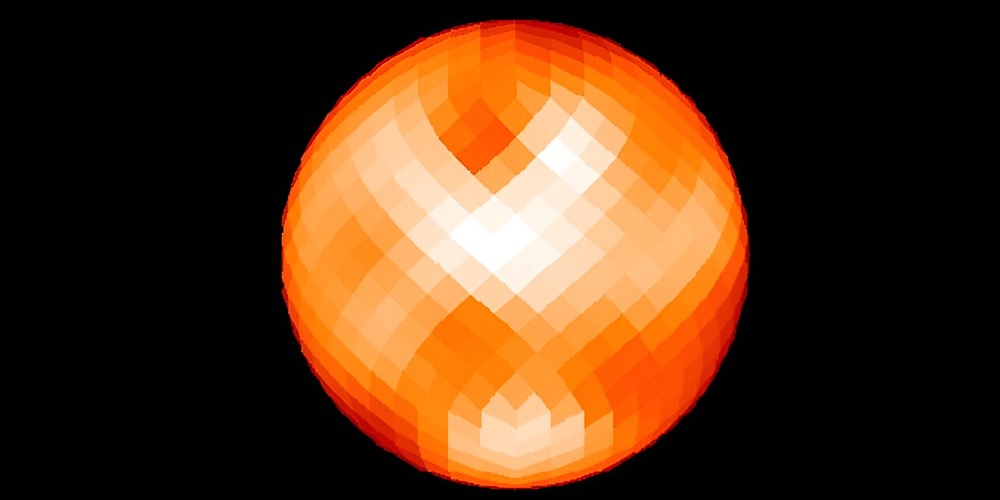User Rating: 5 / 5
Researchers at Georgia State University’s Center for High Angular Resolution Astronomy (CHARA) have discovered new details about the size and appearance of Polaris. The new research is published in the Astrophysical Journal. Earth’s north pole points in a direction in space marked by Polaris. Polaris is both a navigational aid and a prominent star in its own right. It is the brightest member of a triple star system and a pulsating variable star.
Polaris brightens and wanes periodically as the star’s diameter grows and shrinks in a four-day cycle. Polaris is a type of star known as a Cepheid variable. Astronomers use these stars as “standard candles” because their true brightness depends on their pulsation period: brighter stars pulsate more slowly than dimmer ones. How bright a star is in the sky depends on the star’s actual brightness and its distance from the star. Because we know the true brightness of a Cepheid from its pulsation period, astronomers can use it to measure distances to their host galaxies and infer the rate of expansion of the universe. A team of astronomers led by Nancy Evans of the Center for Astrophysics | Harvard and Smithsonian University observed Polaris using the CHARA optical interferometry array of six telescopes on Mount Wilson, California. The goal of the study was to map the orbit of a nearby, faint companion that orbits Polaris every 30 years. “The close distance and high brightness contrast between the two stars make it very difficult to resolve the binary system during their closest approach,” Evans said.
The CHARA array combined light from six telescopes spread across the summit of the historic Mount Wilson Observatory. By combining the light, the CHARA array acted as a 330-meter telescope to detect the faint companion as it passed close to Polaris. The Polaris observations were taken using the MIRC-X camera, built by astronomers from the University of Michigan and the University of Exeter in the UK. The MIRC-X camera has an amazing ability to capture details on stellar surfaces. The team successfully tracked the orbit of the close companion and measured changes in the Cepheid’s size as it pulsated. The orbital motion showed that Polaris had a mass five times that of the Sun. The images of Polaris showed that it had a diameter 46 times larger than the Sun. The big surprise was that Polaris appeared in the close-up images. The CHARA observations provided the first glimpse of what the Cepheid surface might look like.
Image: Georgia State University/CHARA Array
“The CHARA images revealed large bright and dark spots on the surface of Polaris that have changed over time,” said Gil Schaefer, director of the CHARA array. The presence of the spots and the star’s rotation could be related to the 120-day velocity changes. “We plan to continue imaging Polaris in the future,” said John Monier, professor of astronomy at the University of Michigan. “We hope to better understand the mechanism that causes the spots on Polaris’ surface.” The new Polaris observations were made and recorded as part of the CHARA array’s open-access program, where astronomers from around the world can request time through the National Optical and Infrared Astronomy Research Laboratory (NOIRLab).
source: Georgia State University

“Thinker. Coffeeaholic. Award-winning gamer. Web trailblazer. Pop culture scholar. Beer guru. Food specialist.”










More Stories
Rewatch: Live 046 | 08/28/2024
Instagram now lets you add a song to your account
PlayStation Plus Essential Games Announced for September 2024